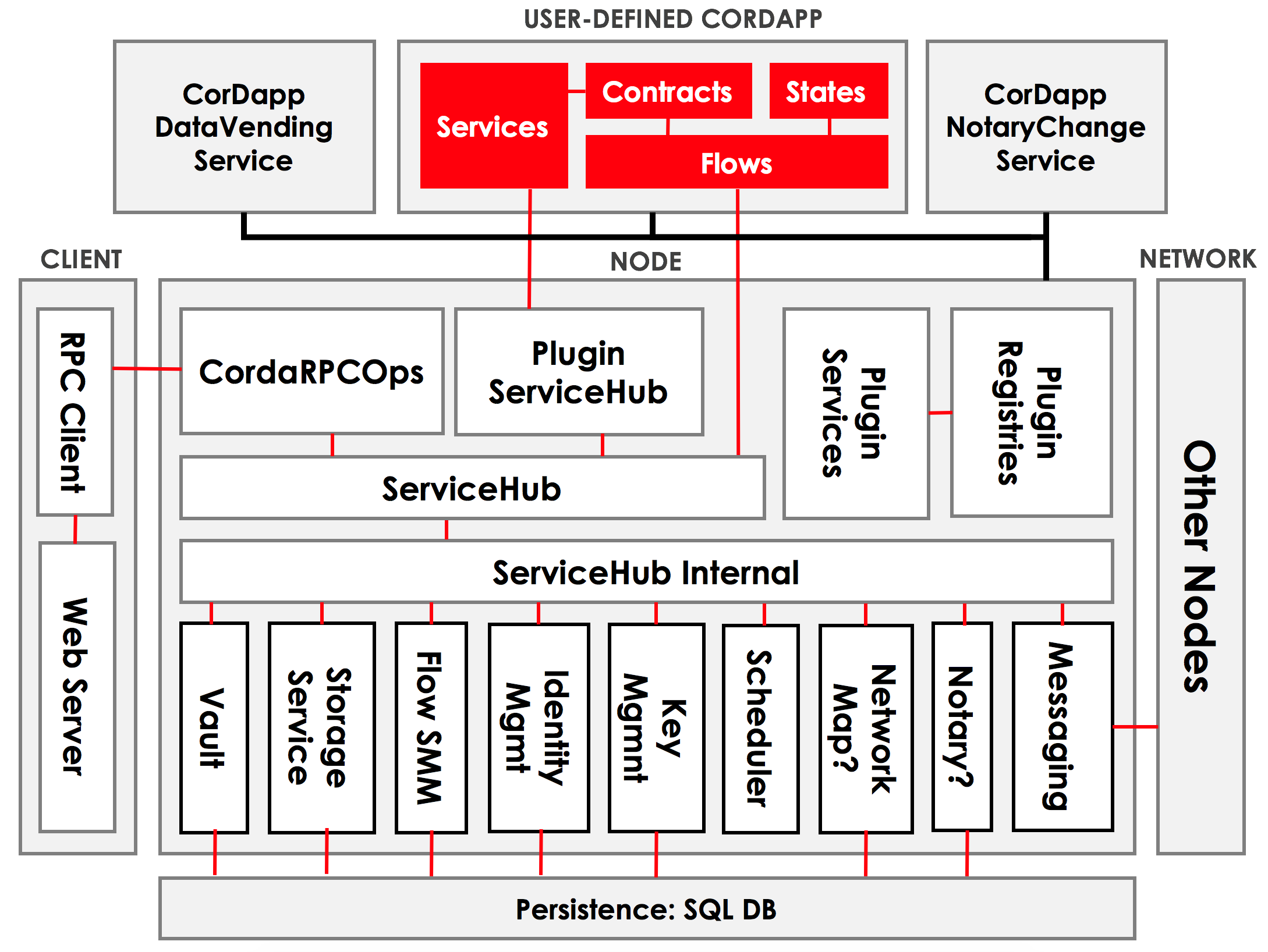Nodes¶
Summary
A node is JVM run-time with a unique network identity running the Corda software
The node has two interfaces with the outside world:
- A network layer, for interacting with other nodes
- RPC, for interacting with the node’s owner
The node’s functionality is extended by installing CorDapps in the plugin registry
Node architecture¶
A Corda node is a JVM run-time environment with a unique identity on the network that hosts Corda services and CorDapps.
We can visualize the node’s internal architecture as follows:

The core elements of the architecture are:
- A persistence layer for storing data
- A network interface for interacting with other nodes
- An RPC interface for interacting with the node’s owner
- A service hub for allowing the node’s flows to call upon the node’s other services
- A plugin registry for extending the node by installing CorDapps
Persistence layer¶
The persistence layer has two parts:
- The vault, where the node stores any relevant current and historic states
- The storage service, where it stores transactions, attachments and flow checkpoints
The node’s owner can query the node’s storage using the RPC interface (see below).
Network interface¶
All communication with other nodes on the network is handled by the node itself, as part of running a flow. The node’s owner does not interact with other network nodes directly.
RPC interface¶
The node’s owner interacts with the node via remote procedure calls (RPC). The key RPC operations the node exposes are documented in API: RPC operations.
The service hub¶
Internally, the node has access to a rich set of services that are used during flow execution to coordinate ledger updates. The key services provided are:
- Information on other nodes on the network and the services they offer
- Access to the contents of the vault and the storage service
- Access to, and generation of, the node’s public-private keypairs
- Information about the node itself
- The current time, as tracked by the node
The plugin registry¶
The plugin registry is where new CorDapps are installed to extend the behavior of the node.
The node also has several plugins installed by default to handle common tasks such as:
- Retrieving transactions and attachments from counterparties
- Upgrading contracts
- Broadcasting agreed ledger updates for recording by counterparties